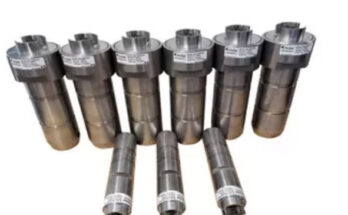This blog will show you how to fix common garage door problems. We’ll give you steps to fix things like bad sensors, broken springs, or bad remotes. Our advice may get your door working right without paying for repairs. Fixing it yourself can save time and money.
Common Garage Door Issues and Fixes
Sometimes, it can seem as though your garage door decides to have problems on its own. As the garage door repair Calgary owner, John Carter notes, When springs don’t behave themselves and openers stop working correctly, figuring things out feels like putting together puzzle pieces. Attempting to do the work without experience in this area could be dangerous.
Step-by-step instructions
Fixing a garage door yourself can be a satisfying challenge. Here’s how to do it safely and effectively.
- Before anything, make sure the garage door opener power is unplugged. This keeps you safe from unexpected movements.
- Get your tools ready. You’ll need wrenches, screwdrivers, a ladder, and safety glasses. Having everything nearby saves time.
- Check the springs carefully. They are under high tension, so it’s best to call a professional if broken.
- Look at cables for fraying or damage. If worn out, replace them carefully using wrenches and screwdrivers to loosen and tighten.
- Inspect rollers and tracks. Clean debris off tracks with a brush and adjust rollers if out of place.
- Track alignment is key for smooth operation. If tracks are not parallel, loosen (don’t remove) screws and tap the track gently into position before re-tightening.
- Let’s try resetting the opener. Unplug it for 30 seconds, then plug it back in and see if it works properly.
- If the weatherstripping needs replacing, gently pull out the old one and push in the new one along the door’s bottom edge.
- Spray some silicone lubricant or white lithium grease on the moving parts – rollers, hinges, tracks – to keep them running smoothly.
- Plug the opener back in (if you unplugged it earlier), press the remote control, or manually lift the door to ensure it opens and closes smoothly.
Tools needed
After ensuring safety precautions, DIY garage door repair calls for the right tools. Having these tools ready makes the job easier and safer.
- Adjustable wrench – This is for tightening and loosening bolts.
- Socket set – A must-have for various nuts and bolts on the garage door mechanism.
- Screwdrivers (both flathead and Phillips) – For screws on the garage door opener and other parts.
- Pliers – They come in handy when you twist or cut wires.
- Hammer – Sometimes, a gentle tap is all needed to align parts.
- Tape measure – Precision is key, so measuring is a crucial step.
- Level – Ensures the garage door aligns perfectly horizontally.
- Drill with bits – Ideal for drilling pilot holes or securing screws tightly.
- Ladder – Some repairs might require reaching high places safely.
- Flashlight or work light – Good lighting is essential for safety and precision.
- Safety eyewear – Protect your eyes from flying bits or dust.
- Gloves – Keep your hands safe from sharp edges and dirt.
- Wire cutter/stripper – Needed for any electrical repairs on your garage door opener.
- Lubricant spray – Keeps moving parts smooth and quiet.
- Clamp or locking pliers – Holds parts in place when you need an extra hand.
Safety precautions
Safety should be the top priority for any garage door repair. Before starting, knowing what to watch out for can make a big difference.
- Always wear safety goggles and gloves. This gear protects your eyes from potentially snapping springs and your hands from sharp edges.
- Turn off power to the garage door opener. This simple step prevents unexpected door movements.
- Keep children and pets away from the work area. Garage doors can move suddenly, posing a risk to curious little ones.
- Use sturdy ladders if you need to reach higher parts. A wobbly ladder is an accident waiting to happen.
- Inspect tools before use. Damaged tools aren’t just less effective—they’re also dangerous.
- Disconnect the automatic opener and secure the door manually before working on it. This ensures it won’t open or close as you work.
- Be cautious with springs. Garage door springs are under high tension and, if handled incorrectly, can cause serious injury.
Advantages of DIY Garage Door Repairs
Fixing your garage door yourself can save you a lot of money. Plus, completing the task gives you a great sense of achievement.
Cost Savings
Repairing the garage door yourself can lead to big savings. Hiring professionals often costs more due to labor charges on top of parts. By doing it yourself, you only pay for parts like springs, cables, or rollers, avoiding service fees.
Sense of accomplishment
Fixing your garage door by yourself does more than just save money. It leaves you feeling pretty proud, too. Imagine the moment you press that remote control and watch the door slide smoothly—knowing it’s all because of your hard work.
Improved safety and convenience
Regular DIY maintenance means catching small problems before they turn big, like spotting a frayed cable before it snaps or oiling rollers to keep them moving quietly and efficiently.
In conclusion
Fixing garage doors can be a DIY project. With the right tools and patience, you can become a pro at troubleshooting garage door problems.
It saves you money, makes you feel proud of your work, and ensures your garage door works smoothly and safely. It may seem hard initially, but fixing springs or cables won’t feel so difficult soon. Remember to put safety first and take things one step at a time.








